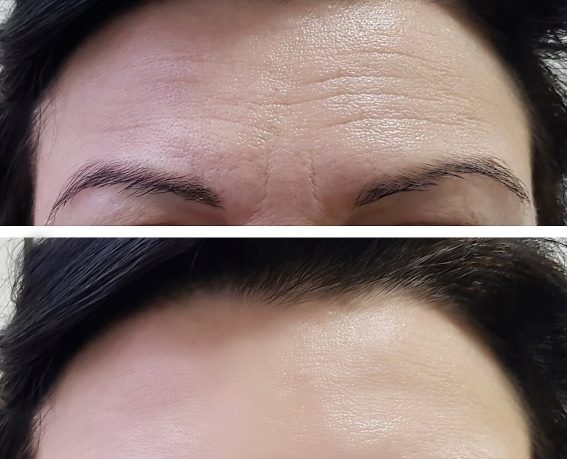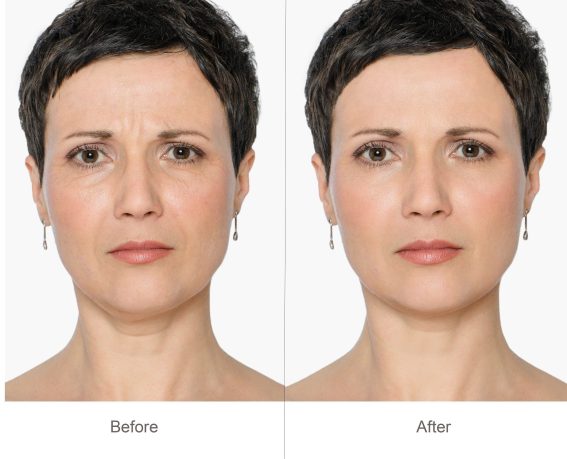What is XEOMIN?
Xeomin
Xeomin (incobotulinumtoxinA), made by Merz Pharmaceuticals, is FDA-approved for the treatment of adults with cervical dystonia or blepharospasm. Xeomin injections are derived from the bacteria that cause botulism. This neurotoxin blocks nerve activity in the muscles, leading to a temporary reduction in muscle activity, making it an effective Xeomin treatment for these conditions.
FDA approval of Xeomin was based on two U.S. clinical trials. A study published in the Journal of Neurological Sciences found that Xeomin showed “non-inferiority” to Botox when used in the same doses to treat cervical dystonia. The study concluded that Xeomin is a safe and effective treatment.
Although Xeomin is not yet FDA-approved for any cosmetic indications, other neurotoxin treatments such as Botox and Dysport are approved for treating facial wrinkles. However, since Xeomin is FDA-approved, doctors can use it off-label for cosmetic purposes, such as treating frown lines, crow’s feet, and forehead wrinkles. If you’re searching for “Xeomin near me,” our clinic offers best Xeomin injections tailored to your needs.
Worldwide, over 84,000 people have received Xeomin treatment. The U.S. is the 20th country to approve this new neurotoxin. Xeomin is available in 50-unit and 100-unit vials, making it a flexible option for both medical and cosmetic applications.
How Does Xeomin Compare to Botox?
Xeomin is unique in that it does not require refrigeration before use, simplifying distribution. Additionally, Xeomin contains no additives—just botulinum toxin type A. This may lower the risk of developing antibodies that could reduce the effectiveness of the treatment. In theory, if the body develops antibodies, it may prevent the neurotoxin from working effectively.
The effects of Xeomin occur within one week, and results typically last between three to six months, making it comparable to Botox in terms of both onset and duration of action. However, Xeomin should not be used interchangeably with other botulinum toxin products.
What Are the Risks of Xeomin Injections?
As with all botulinum toxin products, there is a risk that Xeomin may spread from the injection site to other parts of the body. This could cause potentially serious swallowing and breathing problems, although such cases were primarily seen in children treated with Botox off-label for cerebral palsy. These issues have not been reported among adults using Xeomin injections for cosmetic purposes or to treat blepharospasm. Other possible side effects of Xeomin include minor bruising and swelling at the injection site, as well as allergic reactions such as itching, swelling, or shortness of breath. When used for cervical dystonia, side effects may include neck pain, muscle weakness, and musculoskeletal pain. When used for blepharospasm, common side effects include eyelid sagging, dry eye, dry mouth, diarrhea, headache, visual impairment, shortness of breath, and upper respiratory infections.
How Much Do Xeomin Injections Cost?
Xeomin injection cost is slightly lower than Botox, making it an affordable alternative for those seeking similar results. If you are looking for Xeomin near me and want to know more about pricing, contact our office for Xeomin prices and monthly specials. Call us at 818-280-0700 to schedule your consultation and learn more about our Xeomin treatment options. By choosing Xeomin injections, you can achieve smoother skin and effective relief from medical conditions like cervical dystonia and blepharospasm. Our experienced professionals are here to provide you with the best Xeomin treatment to meet your needs.
FAQs
What is Xeomin treatment?
Xeomin is an FDA-approved injectable neurotoxin that works by temporarily relaxing the muscles responsible for wrinkles and fine lines. It is commonly used to treat dynamic wrinkles on the face, such as frown lines and crow’s feet.
How does Xeomin work?
Xeomin works by blocking the nerve signals that trigger muscle contractions. This results in the temporary relaxation of the treated muscles, smoothing out wrinkles and providing a more youthful, refreshed appearance.
How is Xeomin different from Botox and Dysport?
While Botox and Dysport are similar to Xeomin, the key difference is that Xeomin contains only the botulinum toxin protein, without any additives. This makes Xeomin a good option for individuals who may have developed a resistance to other neurotoxins.
Can Xeomin be combined with other treatments?
Yes, Xeomin can be combined with other cosmetic treatments such as dermal fillers, chemical peels, or laser treatments for enhanced results.
What should I do after a Xeomin treatment?
After the procedure, you should avoid massaging or rubbing the treated area and refrain from strenuous activities for 24 hours. It’s also recommended to remain upright for a few hours after treatment.




